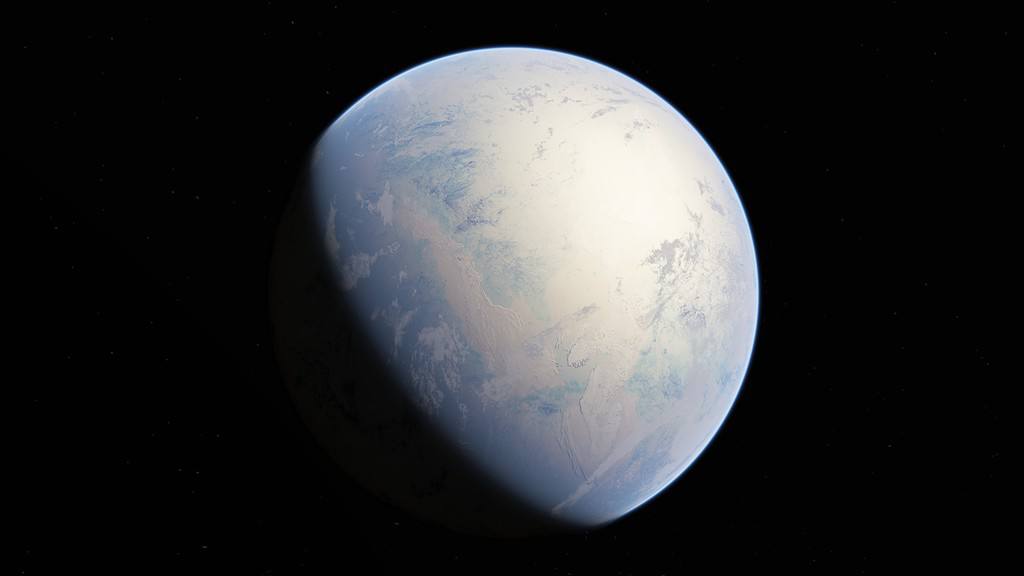
If you were teleported back in time some 700 million years ago inside a spaceship overlooking our planet, the sight would be shocking. Instead of a marvelous blue marble, you’d see a glistening white ball. During this highly dramatic episode of Earth’s geologic history, scientists think that ice smothered the entire planet — from the poles to the equator. Temperatures were far below freezing virtually at every point on the globe.
When Caltech geologist Joe Kirschvink coined the term Snowball Earth in 1989 to describe what the geological evidence pointed to, many experts were left in disbelief. It not only seemed implausible on an intuitive level but the timelines involved were simply stunning. Earth was a planetary snowball for nearly 60 million years. It even happened twice during the aptly named Cryogenian Period.
However, even the most ardent naysayers were soon convinced. The line of compelling evidence includes glacial deposits found at tropical latitudes, including tillites and dropstones, which suggest widespread ice cover extending to the equator. Scientists also identified cap carbonates — indicative of rapid post-glacial warming — directly atop these glacial layers. Paleomagnetic data align with these findings, pointing to the equatorial origins of these deposits, while changes in strontium isotope ratios hint at decreased weathering rates under ice cover, reflecting a starkly altered global climate.
But one important piece of the jigsaw puzzle has always been missing: Why?
Volcanic silence
Australian geologists at the University of Adelaide and the University of Sydney just released a new study that may neatly explain what triggered one of the most bizarre phases in Earth’s geology. By utilizing plate tectonic modeling, the researchers discovered a significant drop in volcanic carbon dioxide emissions. Coupled with the weathering of sizable volcanic rocks in present-day Canada, a process that naturally absorbs CO2 from the atmosphere, the scientists believe this drastic drop in atmospheric CO2 unleashed a freezing feedback loop that kept the planet locked in an ungodly long ice age.
Dr. Adriana Dutkiewicz, the lead author of the study, paints a chilling picture of this bygone era:
“Imagine the Earth almost completely frozen over. That’s just what happened about 700 million years ago; the planet was blanketed in ice from poles to equator and temperatures plunged. However, just what caused this has been an open question.”
“We now think we have cracked the mystery: historically low volcanic carbon dioxide emissions, aided by weathering of a large pile of volcanic rocks in what is now Canada; a process that absorbs atmospheric carbon dioxide.”
Like any good geology research, this study started with a field trip. Glacial debris remnants of this ancient glaciation are still visible in the stark and rugged landscapes of the Flinders Ranges in South Australia. Professor Alan Collins from the University of Adelaide, co-author of the study, spearheaded an expedition to the site, which renewed interest in investigating the cause of this exceptionally long ice age.

The research team revisited a plate tectonic model detailing the evolution of continents and ocean basins following the disintegration of the ancient supercontinent Rodinia. By connecting this model with simulations of CO2 degassing from underwater volcanoes along mid-ocean ridges, they uncovered a direct correlation between the commencement of the Sturtian ice age and historically low levels of volcanic CO2 emissions.
The period in question spanned from 717 to 660 million years ago. During this time, there were no trees or even complex life. Beneath this ice, the oceans would have been cold, dark, and largely cut off from the atmosphere, significantly affecting the evolution of the surviving marine life and oceanic circulation patterns. Any life forms enduring these times would have been primarily microbial, existing in niches where liquid water and necessary nutrients were available, such as near volcanic vents or in spots where geothermal heat might melt the ice to form subglacial lakes.
“Geology ruled climate at this time. We think the Sturtian ice age kicked in due to a double whammy: a plate tectonic reorganization brought volcanic degassing to a minimum, while simultaneously a continental volcanic province in Canada started eroding away, consuming atmospheric CO2,” said co-author Professor Dietmar Müller from the University of Sydney.
“The result was that atmospheric CO2 fell to a level where glaciation kicks in — which we estimate to be below 200 parts per million, less than half today’s level.”
More mysteries remain
About 659 million years ago, the Sturtian ended with an intense greenhouse period when the planet heated rapidly. But then the Marinoan glaciation started and covered the planet in ice again. The first Snowball Earth lasted 58 million years and the second one only lasted 5 million to 15 million years.
The new study doesn’t explain why this second phase was so much shorter compared to the first phase. However, the study marks a significant step forward in unraveling one of the most mysterious and downright weird eras of Earth. While other scientists have previously proposed that a reduction in volcanic gas emissions likely explains Snowball Earth, this is the first time that tangible evidence has been proposed to support this assertion.
Perhaps an interesting question to ponder is whether a Snowball Earth could happen again. The authors of the new study say it’s possible since we’re on a trajectory of lower volcanic CO2 emissions. However, such a scenario would be hundreds of millions of years in the future. Right now, we have more heating issues to worry about.
“Whatever the future holds, it is important to note that geological climate change, of the type studied here, happens extremely slowly. According to NASA, human-induced climate change is happening at a pace 10 times faster than we have seen before,” added Dr. Dutkiewicz.
The findings appeared in the journal Geology.









